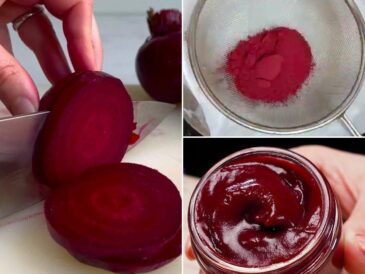Sage – More Than Just a Kitchen Herb
We’ve all used sage in cooking, especially around the holidays—think savory stuffing or roasted meats. But here’s something most people don’t know: that humble herb sitting in your spice rack might just be a natural miracle. Sage has been around for thousands of years, not just as a flavor enhancer but as a respected medicinal plant. Known for its greyish-green leaves and slightly peppery flavor, sage carries a powerhouse of healing properties that go far beyond the kitchen.
Ancient Roots and Historical Use
Sage (Salvia officinalis) has a name derived from the Latin word salvare, meaning “to save”—that’s already a big hint. Ancient civilizations, including the Egyptians, Greeks, and Romans, believed sage could cure just about anything. Greek physicians praised it for its brain-boosting capabilities. Romans used it for digestion and wound healing. Even during the Middle Ages, sage was a go-to remedy for fevers, liver disease, and even plague prevention. Monasteries grew it in abundance in their medicinal herb gardens.
Modern Rise in Herbal Medicine
Today, with more people leaning toward natural and holistic treatments, sage is making a comeback—and it’s backed by science. It’s being researched and praised for its impact on dementia, inflammation, pain, arthritis, osteoarthritis, and more. That’s right—this little leaf is being taken seriously by both herbalists and the medical community. With rising pharmaceutical costs and side effects of synthetic drugs, many people are returning to sage as a safe and effective alternative.
What is Sage? A Quick Overview
Before we dive into its incredible benefits, it’s helpful to understand exactly what sage is. This perennial evergreen shrub belongs to the mint family, Lamiaceae, and grows in temperate climates worldwide.
Types of Sage: Common vs. Medicinal
There are many species of sage, but the most well-known and medically beneficial is Salvia officinalis. That’s the one you’ll typically find in health food stores and herbal supplements. Other varieties like Salvia lavandulifolia (Spanish sage) are also used medicinally, particularly for memory enhancement.
Common sage (Salvia officinalis) can be consumed fresh, dried, or in essential oil form. But it’s important to use the right type. Not all sage species are safe for regular consumption—some ornamental varieties are toxic if ingested. Always look for food-grade or medicinal sage.
Nutritional Breakdown of Sage
Here’s where it gets really interesting. Sage is packed with powerful nutrients and compounds, even in small doses:
- Vitamins: K, A, C, and B-complex
- Minerals: Calcium, iron, magnesium, zinc
- Phytonutrients: Rosmarinic acid, caffeic acid, and flavonoids
- Essential Oils: Thujone, camphor, cineole
All these elements combine to give sage its potent antioxidant, anti-inflammatory, and neuroprotective effects. Even just a teaspoon of dried sage offers a noticeable dose of vitamin K and other micronutrients that support bone health and immune function.
The Science Behind Sage’s Healing Properties
What exactly makes sage such a powerful natural healer? The answer lies in its unique chemical composition. Scientists have discovered that sage is loaded with bioactive compounds that directly impact inflammation, cognitive decline, and pain.
Key Compounds in Sage Leaves
Here are some of the heavy-hitters found in sage:
- Rosmarinic acid: This polyphenol has powerful antioxidant and anti-inflammatory effects.
- Thujone: Found in small amounts, thujone can stimulate the brain, but should be used in moderation.
- Carnosic acid: This protects the brain from oxidative stress.
- Flavonoids: These reduce free radicals and oxidative stress, slowing down cell aging.
- Ursolic acid: A potent compound that has anti-cancer, anti-inflammatory, and muscle-preserving properties.
How These Compounds Interact with the Body
When consumed regularly, sage’s compounds begin working on a cellular level:
- Neutralizing free radicals that damage cells and accelerate aging
- Blocking pro-inflammatory enzymes like COX-2, reducing inflammation and pain
- Enhancing neurotransmitter activity, particularly acetylcholine, which is vital for memory and cognition
- Promoting circulation and helping regulate blood sugar levels
This is why sage is considered a natural multitasker—it works in various body systems at once, delivering full-spectrum healing benefits. And the best part? It does all this with virtually no side effects when taken in recommended amounts.
Sage and Dementia: Can It Really Help?
TO CONTINUE READING THE ARTICLE PLEASE SEE PAGE 2




